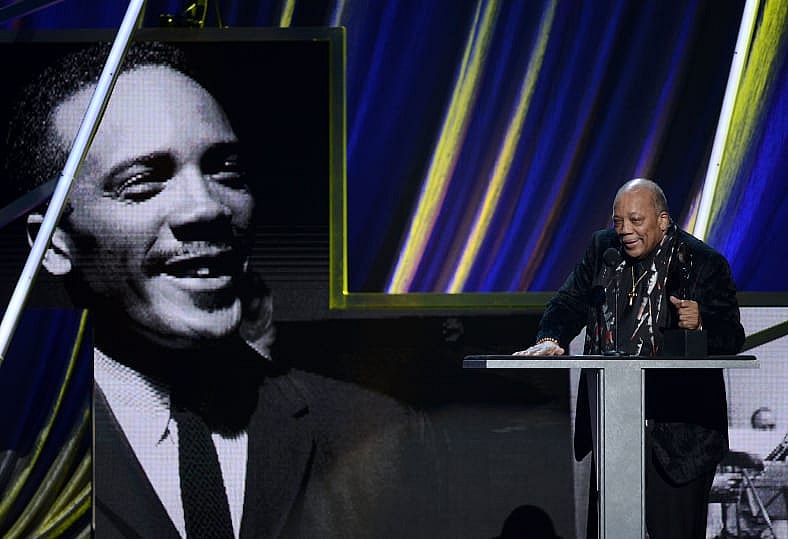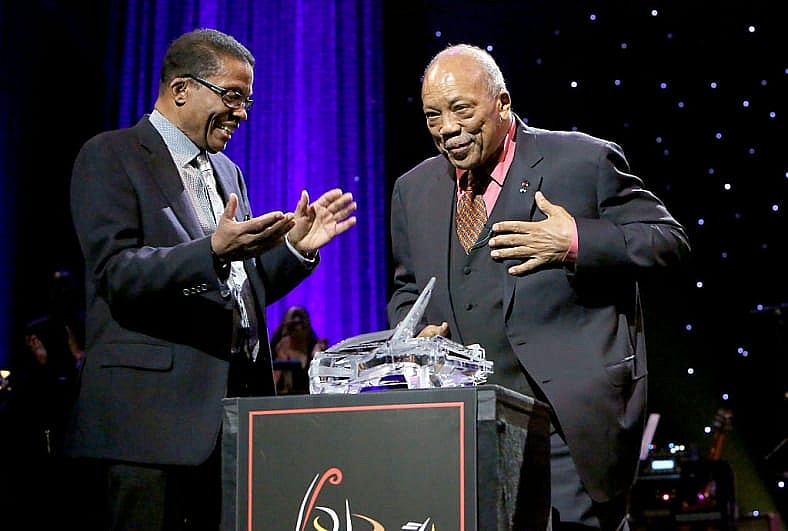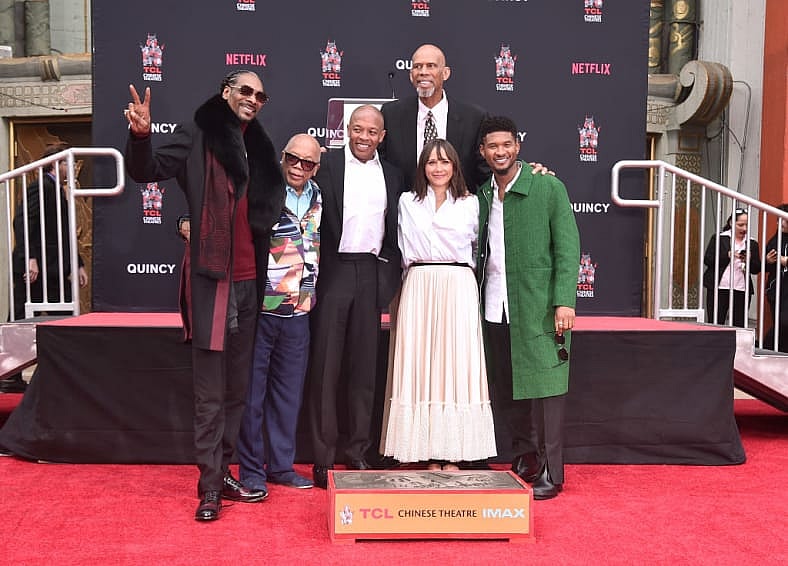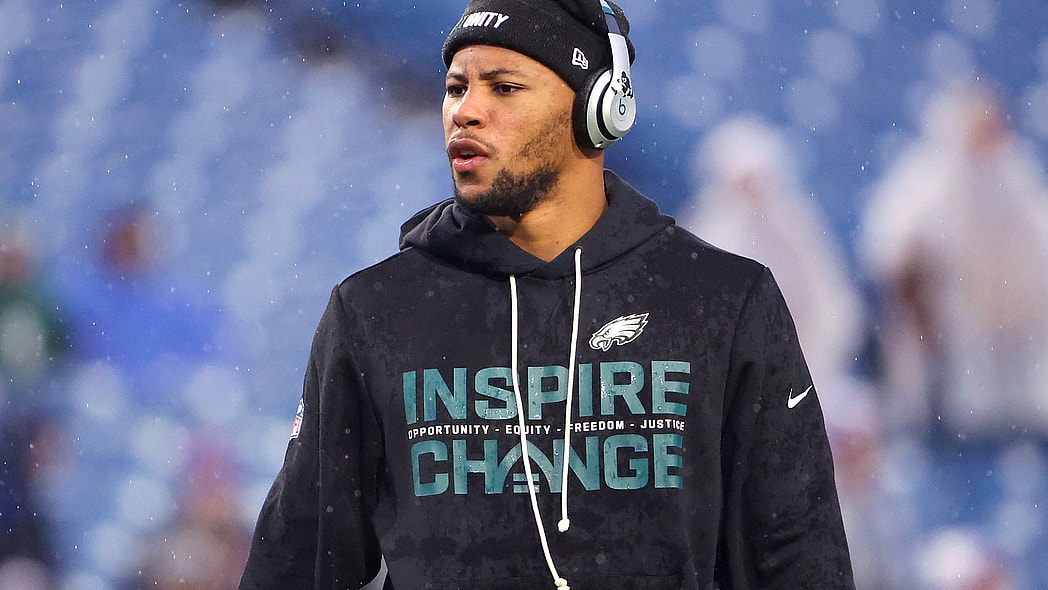Celebrated as the quintessential artist and impresario, Quincy Jones had a life in music that spanned more than seven decades. During a remarkably diverse career, he has made his mark in every facet of the music industry as a music conductor, record producer, arranger, composer, television producer, and trumpeter.
The musical genius, among one of 18 EGOT winners (Emmy, Grammy, Oscar, Tony), died Sunday, November 3 in California at age 91.

“It’s like a melody. You can study orchestration, you can study harmony and theory and everything else, but melodies come straight from God,” Jones said on the American Academy of Achievement’s podcast, “Whatever it Takes.”
Dubbed “Q” by his friends, Quincy Delight Jones Jr. was born March 14, 1933, on Chicago’s South Side. He was the eldest of two sons. When Jones was 10, his father moved the family to the Seattle suburb of Bremerton, Washington. Jones had said he began playing the trumpet after falling in love with music while in grade school and trying out practically every instrument. At age 12, Jones became close friends with another local singer-pianist who was just three years older. Jones and his new friend — one Ray Charles — played together in small clubs and weddings.
Jones earned a scholarship to the prestigious Berklee College of Music in Boston but dropped out to tour with Lionel Hampton from 1951 to 1953. While with Hampton, he also worked as a musical arranger. He soon became musical director for Dizzy Gillespie’s big band tour overseas in 1956. He worked for Barclay Records in Paris from 1957 to 1958, and studied composition and theory with Nadia Boulanger and Olivier Messiaen.
Jones’ career really took off during the late 1950s and early 1960s. In addition to touring with various orchestras around Europe, he wrote and arranged music for Tommy Dorsey, Gene Krupa, Sarah Vaughan, Count Basie, Duke Ellington, Dinah Washington, Cannonball Adderley and, of course, his friend Ray. He returned stateside in the early 1960s.
Jones was named vice president of Mercury Records in 1964, the first Black American to hold such a position in a white-owned record company. During this period, he also tapped into the world of film-score composition — a segment of the music industry that had previously been closed to Black artists. Encouraged by director Sidney Lumet, he wrote the score for “The Pawnbroker) (1964), which became a success.

Jones left Mercury to concentrate on his film work. He would go one to write the scores for nearly 40 motion pictures, including “The Slender Thread” (1965), “Walk Don’t Run” (1966), “In Cold Blood” (1967), “The Italian Job” (1969), “The Wiz” (1978) and “The Color Purple” (1985). He also wrote the theme music for television shows, “Roots,” “Ironside,” “Sanford and Son” and “The Bill Cosby Show.”
Throughout the 1960s, Jones continued to arrange music for iconic entertainers and performers, including Frank Sinatra, Ella Fitzgerald, Peggy Lee and Dinah Washington. But Jones never abandoned his own career as a recording artist. From the late 1960s, his solo work — including the albums “Walking in Space,” “Gula Matari,” “Smackwater Jack,” “Ndeda,” “You’ve Got It Bad Girl” and “Body Heat” — also garnered him much praise.
A cerebral aneurysm in 1974 almost ended his life. He underwent two operations and six months of recuperation before returning to the scene, ready and able to work. He soon released more albums under his name, including “Mellow Madness” and “I Heard That.”

Through Jones’ musical collaborations, he introduced the world to performers such as James Ingram, Patti Austin, Tevin Campbell and Tamia. But perhaps his greatest collaboration was with the King of Pop, Michael Jackson. The pair worked together on “Off the Wall,” “Thriller” and “Bad.” Eventually selling more than an estimated 110 million copies, “Thriller” became the highest-selling album of all time.
When Jackson died in 2009, Jones said: “Divinity brought our souls together on ‘The Wiz’ and allowed us to do what we were able to throughout the ’80s. To this day, the music we created together on ‘Off the Wall,’ ‘Thriller’ and ‘Bad’ is played in every corner of the world, and the reason for that is because he had it all … talent, grace, professionalism, and dedication. He was the consummate entertainer, and his contributions and legacy will be felt upon the world forever. I’ve lost my little brother today, and part of my soul has gone with him.”
Jones also involved himself in political and social causes, starting with the civil rights movement. He supported the Southern Christian Leadership Conference’s Operation Breadbasket, which was an initiative to bolster economic development in the inner city. After Martin Luther King Jr.’s death, Jones worked on the board of the Rev. Jesse Jackson’s PUSH organization.
In 1985, he produced the track “We Are the World“ to raise money for the victims of the famine in Ethiopia. In 2001, he formed the Quincy Jones Listen Up Foundation, which built more than 100 homes in South Africa. In 2004, Jones helped launch the We Are the Future project to help poor children in conflict-stricken areas. Jones was a member of the honorary founders board of the Jazz Foundation of America, which helped save the homes of elderly jazz and blues musicians, including those who survived Hurricane Katrina.
A highly successful businessman, Jones teamed with producer David Salzman in the 1990s to form Quincy Jones/David Salzman Entertainment (QDE) in collaboration with Time Warner Inc. The company has produced an array of film and TV programs, including “In the House,” “The Fresh Prince of Bel-Air” and “MADtv,” and published the magazines Vibe and Spin. Jones also founded Quincy Jones Music Publishing, which maintains an extensive music catalog.
Jones wrote and published in 2001“Q: The Autobiography of Quincy Jones,” in which he explores his many career triumphs as well as his troubled personal life. Jones was married three times. In 1957, he wed Jeri Caldwell with whom he had one daughter; they divorced in 1966. From 1967 to 1974, he was married to Ulla Andersson. That union produced a son and a daughter. From 1974 to 1990, he was married to Peggy Lipton. They had two daughters. Jones also had two daughters from other relationships.
In 2018, daughter Rashida Jones co-directed the Netflix documentary “Quincy,” which follows his illustrious life and career. In the film, he reflected on art, music and his legacy beyond music.
The high regard for Jones within the entertainment industry was obvious: He earned almost 80 Grammy Award nominations and 27 Grammys, including the Legend Award in 1991. In 1995, he became the first Black American to receive the Academy Awards’ Jean Hersholt Humanitarian Award. He was tied with sound designer Willie D. Burton for the most Oscar nominations among African Americans: seven.
Other industry-type honors include the Kennedy Center Honors (2001) recipient, BET Humanitarian Award (2008), National Medal of Arts from President Barack Obama (2011), Los Angeles Press Club Visionary Award (2014), Rock and Roll Hall of Fame inductee (2013), and a “foundational inductee” into the new Black Music & Entertainment Walk of Fame in Atlanta (2021).
Jones also garnered prestigious academic honors. In 2000, Harvard University endowed the Quincy Jones Professorship of Afro-American Music. He also received numerous honorary doctorates, including from Howard, Morehouse and Princeton universities as well as from the Royal Academy of Music in London.
Jones is survived by his seven children including Kenya, Kidada, Quincy and Rashida.









